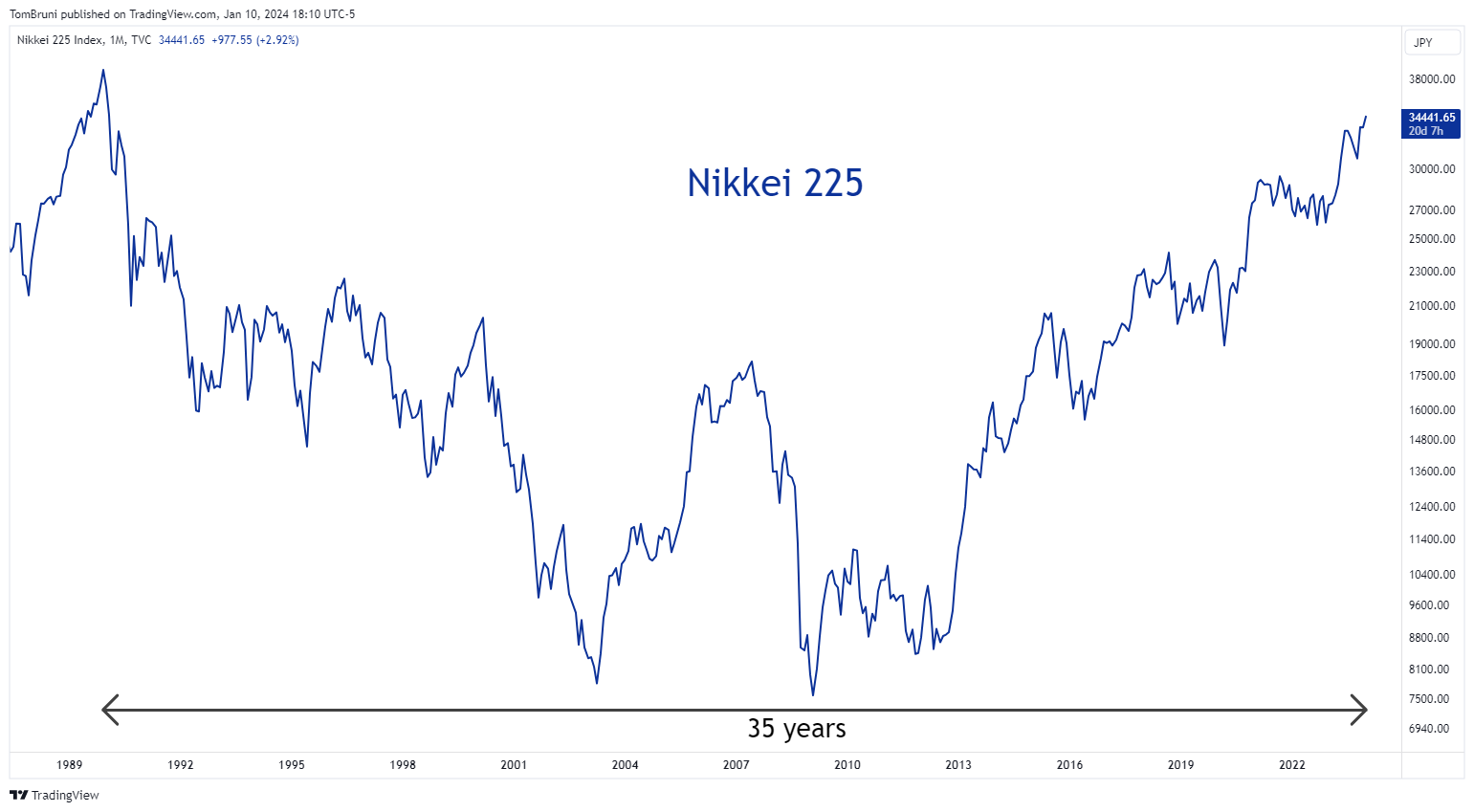One of the world’s best-performing stock markets of 2023 is starting the new year with fresh highs. As measured by the Nikkei 225 index, Japanese stocks reached their highest since the 1990s as investors speculated that the Bank of Japan would delay plans to end its ultra-loose monetary policy. 🕰️
Recently, a devastating earthquake in central Japan caused widespread damage in the region and will likely weigh on the country’s already slow economic growth. As a result, the government is expected to outline fiscal stimulus efforts to help support the rebuilding process.
Analysts say it’s unlikely the Bank of Japan will want to change its ultra-dovish policies because it would offset fiscal efforts to support the economy.
As a result of yields likely staying low for the foreseeable future, stocks became an even more attractive place for investors to put their money. That’s why we saw prices hit fresh highs today, as the Nikkei 225 index approaches highs last seen about 35 years ago. 📈

With that said, the country’s easy-money policy is not without drawbacks…especially for foreign investors. Below are two ETFs that track Japanese stocks, one in Yen ($EWJ) and the other in U.S. Dollars ($DXJ). For most of the last decade, these shares tracked each other relatively closely, but since late 2021, there’s been a significant difference in their performance. 👀

When the U.S. and other developed countries began tightening financial conditions to tame inflation, the Bank of Japan stuck to its easy-money position. Since then, it’s stayed relatively consistent in that position while bond yields around the globe soared. 🕊️
These policy decisions made the Yen a very unattractive currency, especially against those like the U.S. Dollar, where interest rates were much higher. Given these disparities, investors and traders sell Yen to buy more attractive currencies (and assets) around the globe.
The most popular form of this “carry trade” is when they sell Yen to buy U.S. Dollars (and U.S. dollar-denominated assets like Treasuries). This lets investors capture the spread between the country’s differing bond yields and has been a very, very popular trade. 💱
The massive decline in the Yen also explains the impact on U.S. investors owning Japanese stocks. As the chart shows, the ETF priced in Yen is still below its 2022 highs, while the one where the Yen exposure is hedged out has been rallying sharply over the last 2.5 years. Over this period, investors in that vehicle benefitted from higher stock prices and a falling Yen currency. 🤑
For now, the Japanese stock market remains one of the strongest out there. However, investors and traders are carefully watching the Bank of Japan’s actions, as there will be a lot of consequences once the central bank begins tightening monetary policy like its peers have for the last two years.
The Yen recently began strengthening on speculation that the time was near, but the recent earthquake has thrown a wrench in that forecast. As a result, interest rates are expected to remain low, and that should remain a major tailwind for Japanese stocks. 🌬️
